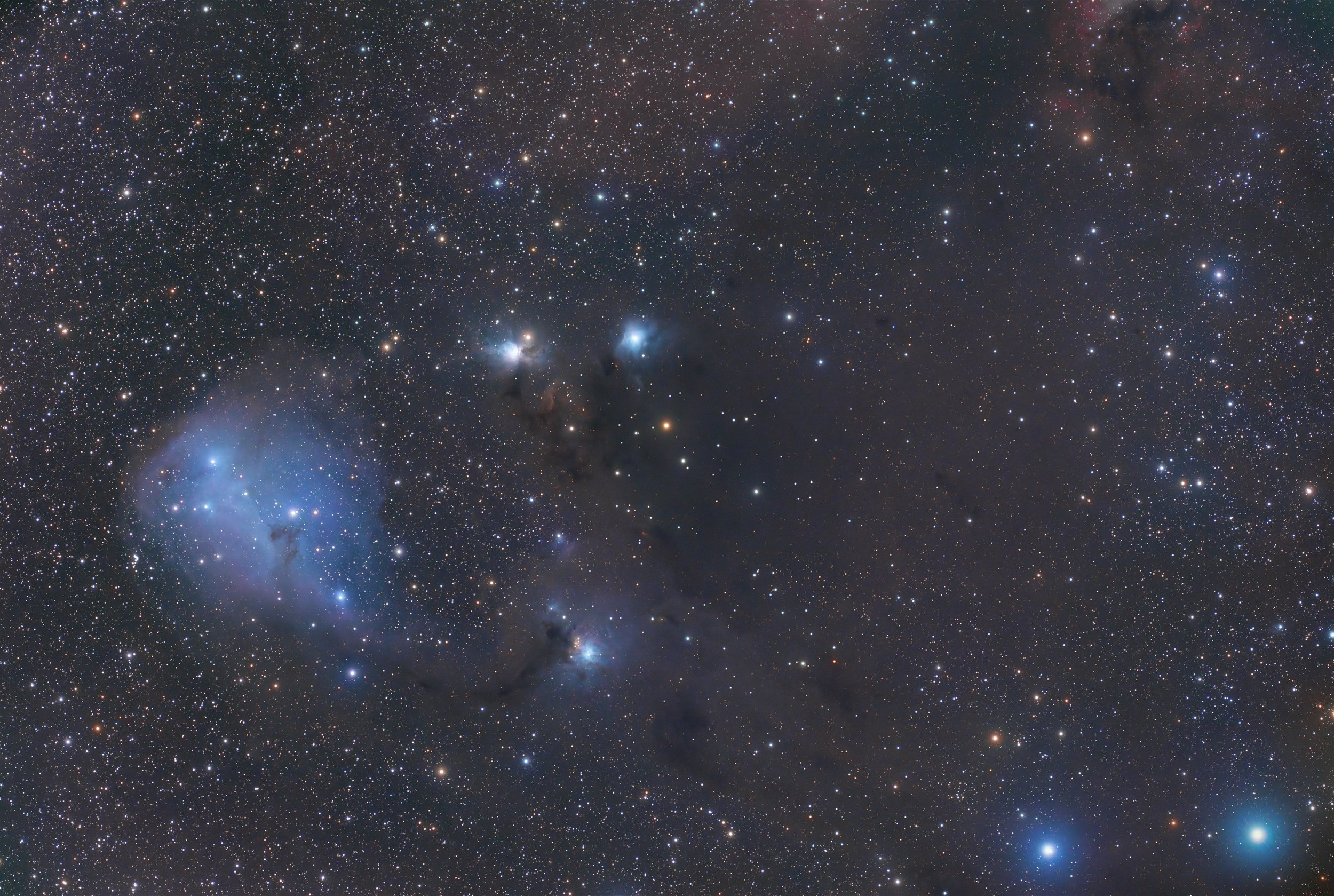
AAPOD2 Image Archives
Leo Quartet/ Hickson 44
Hickson 44, also known as the Leo Quartet, is a compact galaxy group located approximately 80 million light-years away in the constellation Leo. This interacting system consists of four prominent galaxies: NGC 3190, NGC 3193, NGC 3187, and NGC 3185. NGC 3190, the brightest and most striking member, is a warped spiral galaxy with a prominent dust lane cutting across its disk. Nearby, NGC 3187 showcases distorted spiral arms, a sign of gravitational interactions, while the elliptical NGC 3193 remains relatively undisturbed. The smallest of the group, NGC 3185, exhibits a faint barred spiral structure.
These galaxies are in the process of a slow cosmic dance, their mutual gravitational forces shaping their evolution over millions of years. Hickson 44 is an excellent example of galaxy interactions influencing star formation, structural distortions, and potential future mergers. Deep exposures reveal faint tidal streams and extended halos, evidence of past interactions that continue to shape this fascinating galaxy group.
IC 410
This image captures IC 410, also known as the Tadpole Nebula, located in the constellation Auriga. A glowing region of ionized hydrogen, this emission nebula surrounds the open star cluster NGC 1893, a young cluster whose stars power the nebula's illumination.
The "tadpoles" themselves—two dense, dusty structures stretching roughly 10 light-years each—are regions of concentrated gas and dust, shaped by stellar winds and radiation. These structures are likely sites of ongoing star formation, hidden within their dense cocoons.
The image displays a rich palette of colors, showcasing hydrogen-alpha (red), oxygen (blue), and sulfur (gold) emissions, bringing out the intricate textures and dramatic interplay of light and shadow within the nebula.
IC 410 resides approximately 12,000 light-years away and spans about 100 light-years across. This vibrant celestial portrait reveals the complex dynamics of star formation and the incredible power of young, massive stars.
Messier 100
Located in the constellation Coma Berenices, M100 is a grand design spiral galaxy approximately 55 million light-years away from Earth. With a diameter spanning over 100,000 light-years, it is one of the largest and brightest members of the Virgo Cluster of galaxies. M100 exhibits prominent spiral arms filled with young, hot stars, as well as dark dust lanes that trace the galaxy's structure. Its bright nucleus harbors a supermassive black hole, which is believed to play a crucial role in regulating the galaxy's growth and evolution.
Originally discovered by Pierre Méchain in 1781, M100 is celebrated for its exceptional beauty and rich astrophysical significance. It serves as a key object of study for astronomers seeking to understand the processes driving the formation and evolution of spiral galaxies. Through detailed observations and analysis, researchers have uncovered a wealth of information about M100's stellar population, star formation activity, and overall structure, contributing to our broader understanding of galactic dynamics and cosmology. As a captivating cosmic gem nestled within the vastness of the universe, M100 continues to inspire and intrigue observers with its timeless allure.




